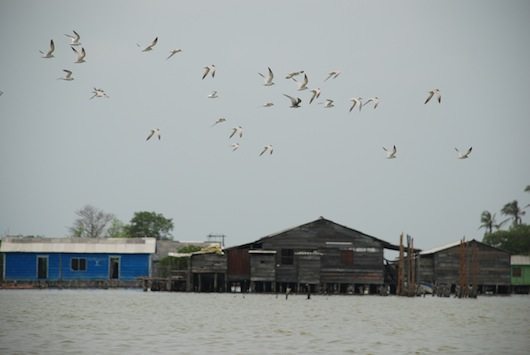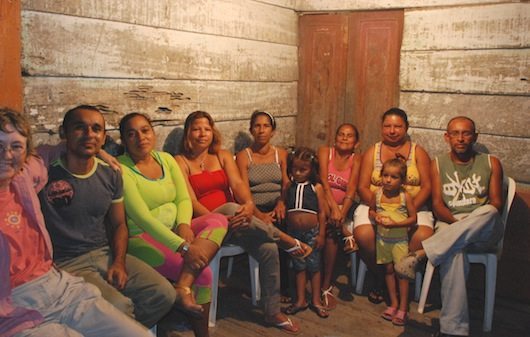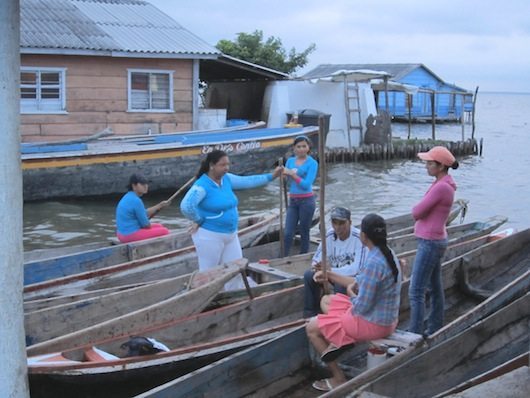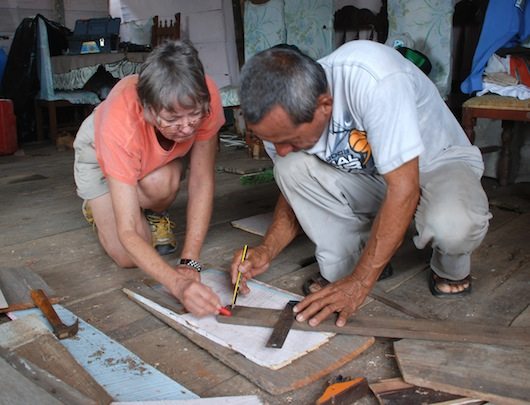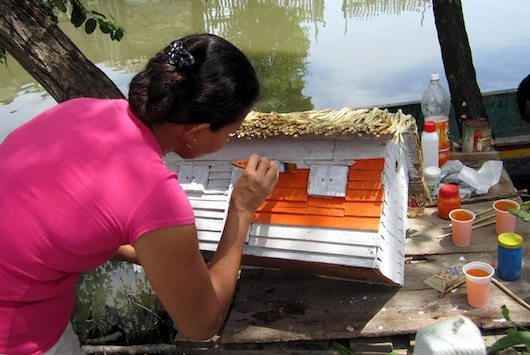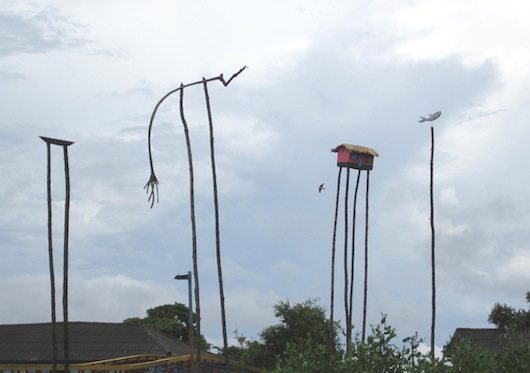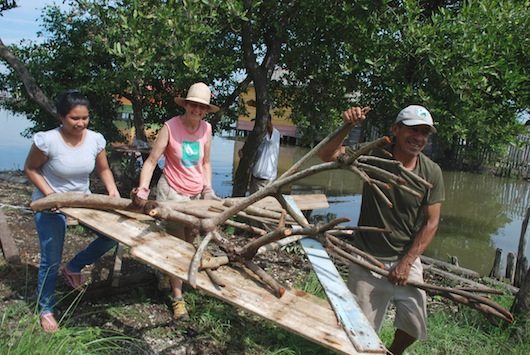 Lynne Hull’s community-participatory project in Nueva Venecia, Santa Marta, and Laguna Grande Parque Nacional, Colombia. Sponsored by Museo Bolivariano and Parques Nacionales Naturales de Colombia, territorial Caribe.
Lynne Hull’s community-participatory project in Nueva Venecia, Santa Marta, and Laguna Grande Parque Nacional, Colombia. Sponsored by Museo Bolivariano and Parques Nacionales Naturales de Colombia, territorial Caribe.
I conducted the project with the assistance of artist Oscar Leone, Don Humberto Amado, and the community of Nueva Venecia, an impoverished community of people living in houses on stilts (palos) in the mangrove lagoon of a national park. The lagoon supports thousands of migratory sea birds, native Colombian birds, and three communities whose livelihoods are based on fishing.
We took a ‘scouting’ trip to the community, three hours by power launch from the nearest highway. We identified the environmental challenges of the polluted lagoon, where people fished for sale at the market and for their food and where children played and swam in the water. At the same time sewage was dropped from casas (homes) directly into the water, and toxic chemicals from the Magdalena river were creeping in from the southwest corner of the lagoon. The combination creates serious health hazards.
The community, particularly its women’s group, was interested in participating in creating artworks to address these issues and to build the identity of the community. Drinking water from a freshwater stream is brought in at a distance of an hour or more by boat, then sold to the residents (on a BYO plastic container basis). Without land, the people in the community find it difficult to get fresh produce, although some is obtained through trade for fish. A few pigs and chickens are raised on the decks that surround most of the houses. Here I learned that pigs can swim, from one floating bit of green stuff to another!
I had previously created numerous floating islands, life rafts for a food web of aquatic species. Some of these islands are planted with plants that are known to filter water, thereby reducing pollution. On our second visit with community members, we created four rafts. It was difficult to identify local plants known to filter and clean water in the tropics, but we did find water hyacinth floating around the area and installed it on the rafts.
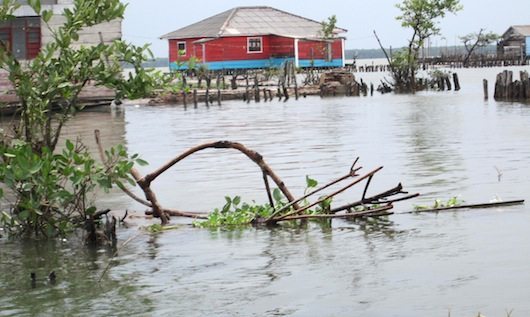
We also created very tall sculptures depicting the four elements I felt identified the community: fish, canoe, mangrove, and brightly painted casas. The fish sculpture moves as a weathervane.
In collaboration with the women’s group, Oscar, a videographer, created a video of women canoeing around one of the small islands. Canoes are dugouts, usually poled in shallow water, occasionally assisted by beautiful sails created from recycled materials. Oscar was essential in assisting me with the community gatherings and the sculpture construction, as was Don Humberto Amado.

On one day, we loaded children into canoes, gave them colored chalk, and went from house to house drawing on the outsides of the houses.
My time at Nueva Venecia was limited, but I would love to go back to help develop rooftop vegetable gardens and some wind-powered water paddles to oxygenate the lagoon water. It would be helpful to identify more plants capable of filtering water. Further, we could also attempt to trace some of the chemicals in the Rio Magdalena back to their sources upstream and investigate the possibility of simple engineering to discourage river water from entering the lagoon—or perhaps that’s a job for another artist. Another serious issue that needs addressing is the climate disruption impacting the lagoon, which is raising the water temperature, decreasing the variety of fish who can survive in it.
Nueva Venecia is one of the most distinctive, remote locations I’ve ever worked. I was surprised to learn that the people prefer living in the lagoon to relocating to land offered by the parks service—due to Colombia’s sad history of civil unrest and nighttime massacres in two villages in 2000. To some foreign ears, this may sound like a desperate place, but from what I saw, the people seem content living their unique lives.
Oscar describes his project with the women’s group: ‘This performative project (carried out at the end of August 2010) called a group of 15 women of Nueva Venecia, each on their own canoe (or boat), to carry out an action consisting in going around one of the Islands of the mangrove wetland, with the hope of encountering again a space of enchantment and innocence, while acknowledging the empowering work of the feminine in the Lake Complex of Ciénaga Grande de Santa Marta (Colombia), one of the world’s biggest wetlands near a coastal area.’
END NOTES
Photos taken by Oscar Leone


